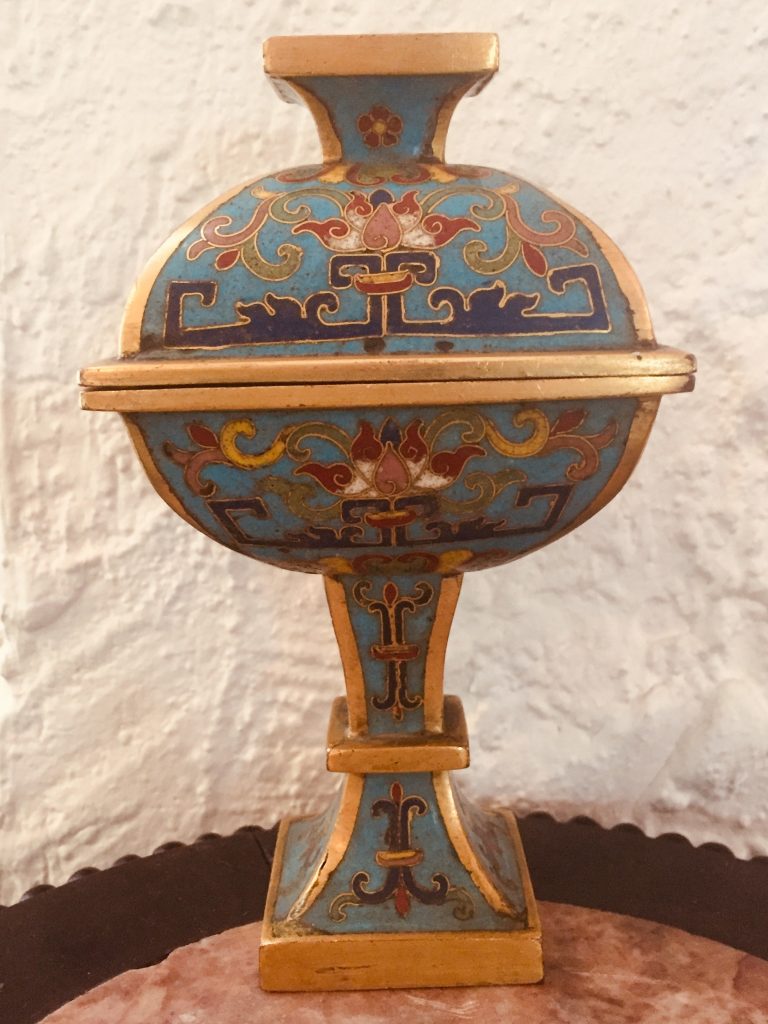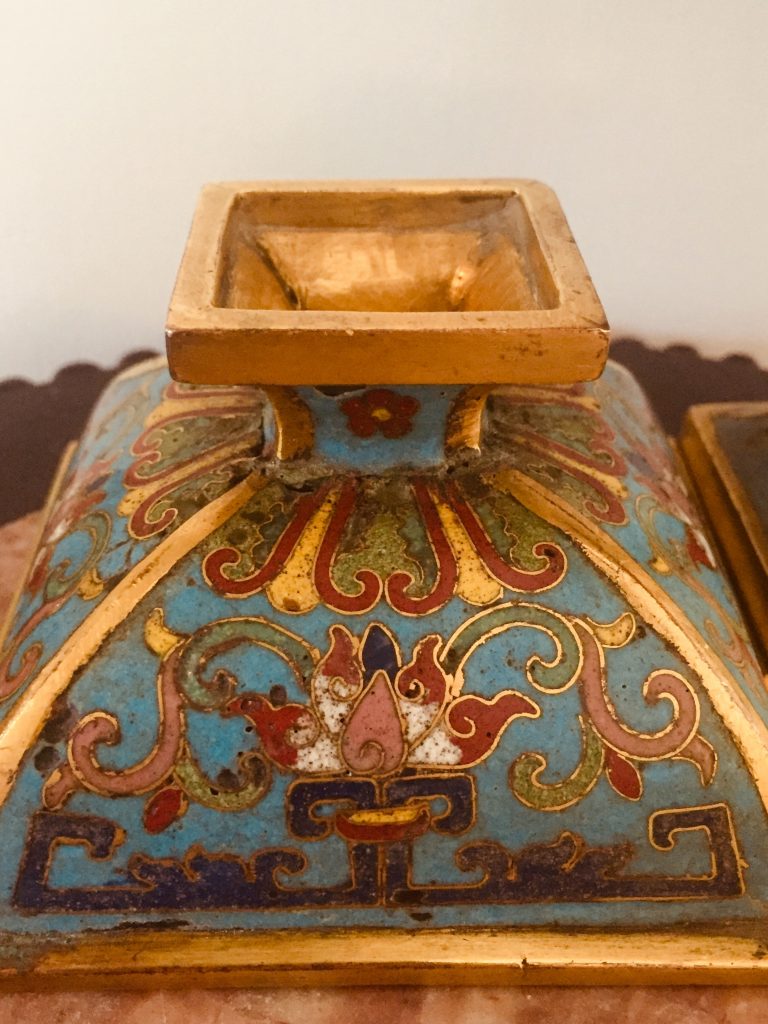Chinese cloisonné – a question of gilding and wirework
Chinese enamelware or cloisonné (a French word- for the process of thin wire dividing cells of color worked to depict design) is a prized technique to collectors. Objects of worship to utilitarian items were produced in China from the 14th century – arriving from the Near East.
Enamelware is one of the rare examples of the world outside the Middle Kingdom influencing its handy crafts on such a mass scale.
Please feel free to contact PKR Antiques at 5614203943 or info@pkrantiques.com to discuss current values of Chinese and Japanese cloisonné enamel.
Early enamelware is usually recognizable from the quality of its gilt work and the use of a single color per laid wire cell. Later enamelware used several colors to be laid within a divided cell.
Many 18th century gilt bronze or copper objects were mercury gilded.
Using liquid silver mixed with gold to apply in a smooth consistent manner. The advantage but time consuming feature of mercury gilding is that it maybe repeated many times until the desired effect is achieved.
The heated gold or fire gilding allows the gold to infuse to the object, the result is a high gold tone centuries later without the flaking or ware associated with lesser techniques.
The above object [Qianlong period cloisonné enamel altar censer] exhibits the quality of mercury gilding – dating from the mid 18th century it’s gilding is bright and vibrant without wear or base metal showing through.
Wire work like brushwork to porcelain is the visual display of the craftsman skill, tight fully enclosed wires depicting design in a uniform true to life manner is a sign of a skilled artisan.


Leave a Reply